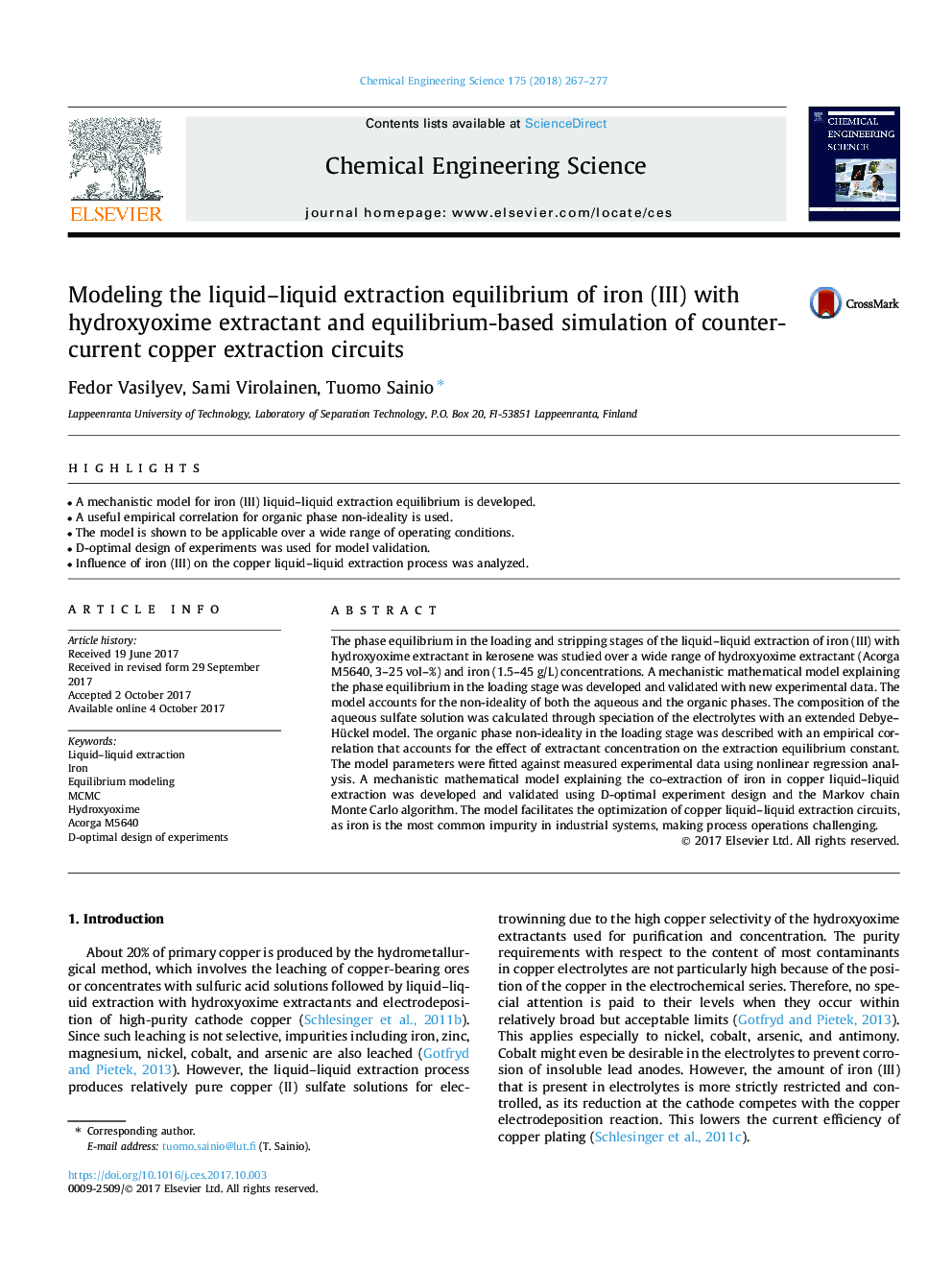| Article ID | Journal | Published Year | Pages | File Type |
|---|---|---|---|---|
| 4763820 | Chemical Engineering Science | 2018 | 11 Pages |
â¢A mechanistic model for iron (III) liquid-liquid extraction equilibrium is developed.â¢A useful empirical correlation for organic phase non-ideality is used.â¢The model is shown to be applicable over a wide range of operating conditions.â¢D-optimal design of experiments was used for model validation.â¢Influence of iron (III) on the copper liquid-liquid extraction process was analyzed.
The phase equilibrium in the loading and stripping stages of the liquid-liquid extraction of iron (III) with hydroxyoxime extractant in kerosene was studied over a wide range of hydroxyoxime extractant (Acorga M5640, 3-25Â vol-%) and iron (1.5-45Â g/L) concentrations. A mechanistic mathematical model explaining the phase equilibrium in the loading stage was developed and validated with new experimental data. The model accounts for the non-ideality of both the aqueous and the organic phases. The composition of the aqueous sulfate solution was calculated through speciation of the electrolytes with an extended Debye-Hückel model. The organic phase non-ideality in the loading stage was described with an empirical correlation that accounts for the effect of extractant concentration on the extraction equilibrium constant. The model parameters were fitted against measured experimental data using nonlinear regression analysis. A mechanistic mathematical model explaining the co-extraction of iron in copper liquid-liquid extraction was developed and validated using D-optimal experiment design and the Markov chain Monte Carlo algorithm. The model facilitates the optimization of copper liquid-liquid extraction circuits, as iron is the most common impurity in industrial systems, making process operations challenging.
